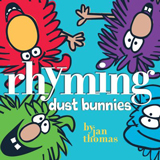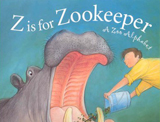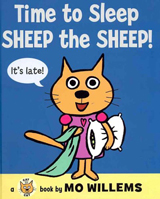This is the latest in an occasional series by Beth Melo, a Southborough mom who loves to read to her kids. In this installment, Beth shares her favorite choices for children who are learning to read. This post was originally published on the Southborough Library website, and has been reposted here with permission. For more of Beth’s book recommendations, click here.
From ABCs to Learning to Read
I’m sure that it’s no coincidence with my family’s love of reading, that my daughter was an early beginner reader. I found it to be a long journey in many ways, but with sudden surges forward that surprised me. And now my son is at the early stages of his journey. In working on it with him, I’ve been to reviewing the steps I took with her.
For those of you working on it with your own children, I want to share my experience with you. I’m not a teacher or literacy expert. My advice, as usual, is geared toward using books that both parents and children enjoy together. I’d also like to encourage people to post their own favorite beginner reading books or tools in the comments.
 Pre-Reading Prep:
Pre-Reading Prep:
1. Engaging them in the process – I like to read books that encourage their participation:
- The Benchmark Rebus series by Dana Meachen Rau allow children to translate the pictures in the text. Since the rest of the text is very short, repetitive and basic, it’s also a good way to help them start recognizing sight words.
- Shirley Neitzel also has series of rebus books, with a twist. The formula builds a growing list (with embedded rebuses) that repeats items from previous pages as it grows. One of my favorites is Our Class Took a Trip to the Zoo.
- Books with obvious rhyming words. Whenever I read a book that had obvious rhymes, I let them fill in the blanks. For example, I love the rhyming books by Lynley Dodd and Patricia Hubbell, and some of the classic Random House I Can Read It All By Myself and Bright and Early series. There are also a few books that seem written just for this purpose:
- Rhyming Dust Bunnies and Here Comes the Big, Mean Dust Bunny by Jan Thomas
- Kathryn Heling has a couple cute beginner phonic readers based on rhyming: Mouse Makes Words and Mouse’s Hide-And-Seek Words.
2. Phonics – before they can read, obviously recognizing the sounds letters make is an important step. A slew of cute baby books that cover ABCs and their sounds. As they get older, they may also enjoy Rosemary Wells’ Letters and Sounds and Ready to Read. These are part of her Get Set for Kindergarten series, so they follow a Kindergarten class through pre-reading learning activities in school. What makes it more entertaining is that it uses characters familiar to children who have read Wells’ other books about Mrs. Jenkins class with Yoko, Timothy, Nora and Charles.
(I also have to confess that I believe PBS’ show Word World has been wonderful for my children in this area. It is my favorite TV show for them. They laugh all through it and really do seem to learn at the same time.)
3. Teaching lowercase letters. My son knows phonics well enough to start trying to read. Unfortunately, the lowercase letters that he doesn’t know as well as I thought are tripping him up. (I haven’t found any early readers in all caps.) I had the same problem with my daughter, but forgot until I ran into it again with him. If you are reviewing lowercase letters for preschool or kindergarten children, here are some books that can make it fun.
- Books that use lowercase letters as main characters:
- Chicka Chicka Boom Boom by Bill Martin is a classic that focuses on lowercase letters. Kids love to memorize the rhyming text and chant along.
- Judy Sierra’s Sleepy Little Alphabet: a bedtime story from Alphabet Town is a cute story about the little letters’ bedtime antics.
- Audrey Wood’s Alphabet Adventure and Alphabet Mystery aren’t quite as good here, since they only focus on a few letters. But they are two more opportunities to talk about the letters in a fun way.
- Some authors or publishers have series books that teach about other subjects of interest to children, and just happen to teach the alphabet, too. (For the purpose of teaching lower case, I like to cover the capital with my thumb while reviewing these.) Ones that include lowercase letters and my family has enjoyed:
- Our favorite of Jerry Pallotta’s is The Construction Alphabet Book. (For girlier choices, he also has a flower one and, under Co-Author Brian Cassie, a butterfly one – neither of which we’ve tried.)
- Sleeping Bear Press has an extensive series including Z is for Zookeeper,R is for Race, and girlier options, too. Some seem written for older children who want to learn extensively about the subject matter. When the text is too long, I just quote the interesting highlights.
 4. Words by Sight — I read some good advice when I was trying to learn about how to encourage my daughter’s reading skills (I would footnote the reference, but don’t remember what book it was in!) The gist was not to get too focused on phonics. There are so many confusing rules and exceptions. When you read, you don’t sound out words, you recognize them. That is how you should teach your children.
4. Words by Sight — I read some good advice when I was trying to learn about how to encourage my daughter’s reading skills (I would footnote the reference, but don’t remember what book it was in!) The gist was not to get too focused on phonics. There are so many confusing rules and exceptions. When you read, you don’t sound out words, you recognize them. That is how you should teach your children.
When my daughter’s preschool teachers encouraged us to start teaching her sight words, I did a lot of pointing out basic words in simple picture books I was reading (“the”, “in”, “to”, “with”, etc.). Then we moved to a chart and stickers that she could show off to her grandparents. This was a long, repetitive process.
Children have different interest levels. I wouldn’t push your children too hard, just at the level they enjoy challenging themselves and try to keep it fun. And use whatever tools or motivations work for them. Whenever my daughter’s interest waned, I immediately backed off. That meant that sometimes, after we seemed to make great progress, a month went by before she was ready to try again. Often ground was lost and she had to relearn words she had seemed to know well. That was OK.
Early Reading: Once I was ready to try some early reader books I discovered (and still struggle with) that each publisher seems to have wildly different views on what pre-, first, second, and third level readers are. I’ve found pre and first level books by one publisher that are more difficult than a third level from another. So to help, I’ve listed some of my favorites by progressing stage (as I define them):
1. Just teaching them to try to sound out the words themselves – one to a couple per page:
- Flip-A-Word books — Books like Crab Cab and Pig Wig are silly and strange. But once your child has a grasp of basic consonant sounds, the die-cut pages emphasize recurring ending sounds, so they only need to work out the changing phonics at the front of the word.
- The Sounds Like Reading series by Brian Cleary — Each book focuses on a segment of phonics. Each double page spread uses one rhyming sound. There is a short list of pictured rhyming words. On the facing page, a picture incorporates the words and a few basic sight words into a silly sentence. As the book progresses, sentences become harder. It’s great for building confidence while gradually challenging children to stretch themselves.
- BOB books — Starting with Set 1 Beginning Readers, these are very simple and repetitive, starting with one word on a page and progressing to a few repeated words together on one page and only a few pages per book. The simplicity makes it easier for first readers to accomplish reading a whole book by themselves. But books also come in a box set, so children who have a hunger for more can read multiple books in a sitting. Sets also progress in levels. (Personally, I don’t get the value of the “pre-reader set” that are longer in text and therefore meant to be read to your children.)
- We Both Read Level K – These alternate pages with short sentences for parents and one or two words for the child. I found this helped to deal with the problem that often my children prefer to be read to. But they do like to show off their skills as long as it doesn’t take too much effort. (There are only a couple at this level of reading skill, then more for what they describe as level 1 & 2.)
- Kathryn Heling’s Mouse books that I mentioned earlier are good for cooperative reading, too.
 2. Ready to read about one short, simple sentence per page:
2. Ready to read about one short, simple sentence per page:
- Phil Roxbee Cox’s Usborne Phonics Readers are cute and simple with titles like Shark in the Park.
- Children’s Press Rookie Reader series – We especially enjoy Charnon Simon’s books about an enthusiastic dog, starting with Guard the House, Sam!
- Usborne Very First Reading Series (books 1 – 7) – Another example of books with the read together concept. This series starts with alternating readers and only short sentences for the child. As the books progress, the sentences get longer and the format changes to children reading by themselves. A section at the end of each book makes a game of testing your child’s comprehension of the book just read.
- Brand New Readers sets come in a box. They are similar to the Bob books, but I believe are a bit more advanced than the 1st level Bob books, which are also have sets at this level.
- Mo Willem’s beginner readers are wonderful. The cat books like Time to Sleep, Sheep the Sheep! are great to start, followed by Elephant and Piggie books.
- Cute picture books are good as a tool here too. Whenever I read a picture book that had clear font and simple sentences, I encouraged my daughter to read it, or part of it. The books I previously recommended for toddlers are also good for beginning readers. (Some are great for this stage and others for the next.) (http://www.southboroughlib.org/fun-reading-for-toddlers/)
- Picture books by Jan Thomas are also fun and simple. Like Willems, I believe Thomas’ humor makes kids eager to read what happens next. Let’s Count Goats, What Will Fat Cat Sit On?, and Is Everyone Ready for Fun? are good examples.
3. Ready to read a couple of sentences per page:
- Mary Ann Hoberman’s You Read to Me, I’ll Read to You series – children and parents go back and forth reading lines in the book based on a color code. While technically, there are a lot of sentences on a page, each alternating line is like a new page and each double page spread is like its own book, complete with several pictures on each page. These books generally start out with short lines and progress to multiple sentence lines by the end of the book.
- Usborne Very First Reading Series (books 8-15) – Unlike the early books in the series, children read these by themselves. These still include fun reading comprehension tests at end of book.
- Go Diego Go! phonics series – These books are great for fans of the show.
Once your child has mastered this stage, I think it’s best to engage their help to find harder books to read. They know how much they want to push themselves better than we do sometimes. And having them search the beginner reader shelves is empowering.
Finally, to read more on this subject, the library’s Children’s Department has books in the parenting section (written by actual experts). If you have any questions for me, feel free to e-mail becmelo@yahoo.com. If you have any suggestions for other parents, you can post a comment below.


One of the most rewarding experiences I have had as a parent (of two young boys) is reading with them at bedtime. But we often ad-lib our own made-up bedtime stories. When they asked me to write one of the stories into a children’s book, it melted my heart. Writing a book with my father was one of the unfulfilled wishes I had at their age. So we just finished writing Puddle Boy as a young children’s video book (bedtime story).
http://www.youtube.com/watch?v=JNkfZ59DNWM
Now that we finished one video book, my sons’ minds are abuzz with newer, bigger, better stories they want to write. I’ve never seen such creativity from them. So my new opinion is that reading with them is great. But writing with them is even better! How do other parents feel?